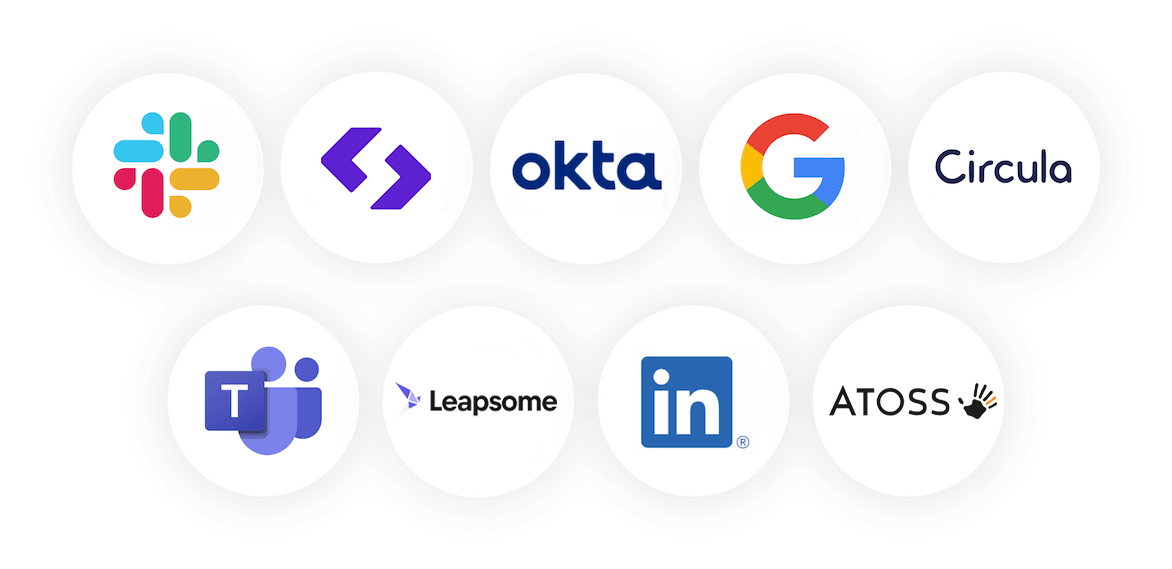1. March 2024
How to connect your HR and L&D strategy

How confident would you be that your employees have the right skills to reach your business goals in the next year? What about the next five?
According to HR Grapevine, the skills needed for the average job are expected to change by 65% by 2030. Similarly, 69% of UK hiring managers believe skills gaps could grow in this time, thanks to the rate of change in how we work. Helping your employees to gain the skills they need is no longer a nice-to-have – it’s absolutely mandatory.
So, how do you help your people to gain those missing skills at scale? We spoke to Aisling MacNamara, Senior Manager of Learning & Development at learning platform LearnUpon, to find out.
Here, she shares how to use your L&D offering to prepare your workforce for these inevitable changes, in five crucial steps:
1. Focus on your onboarding
Ideally, your employees’ L&D journey with your organisation should start from day one in the company, says Aisling: “If you are building an L&D programme from the ground up, it’s always a good idea to make sure your onboarding programme is engaging and effective.”
This is especially true if your small business may be evolving from a more informal way of training new hires to a more structured approach. Getting things right from the very start of the employee lifecycle with skill-based onboarding will provide the foundations for long-term learning for your employees throughout their time in your company.
Aisling explains: “Onboarding is a crucial learning experience for new employees so I would start here and then build out to other areas of development, like career development.”
2. Define your overall people strategy
Next, consider what you really want to get out of your L&D programme. This will feel impossible if you do not have a clear people strategy in place to fully align it with: “HR should set the people goals (for example, retention) and your L&D strategy should then support this.”
For example, a top-line goal for your people strategy may be to reduce regretted attrition and increase engagement. To do either, L&D programmes can help ladder up into those goals.
When defining your goals for this, don’t forget that clear but ambitious goals not only benefit the business, but they will benefit your employees too. In fact, 96% of organisations notice an improvement in employee wellbeing when they focus on L&D:
“Employees want to develop and advance their careers and the company wants to be successful and achieve ambitious targets. Learning plays a huge role in this and I see L&D as being the link between these.”
3. Ensure your L&D team can be data-driven
From Aisling’s perspective, a really positive trend we’re seeing for L&D is that the responsible teams finally have a seat at the table and leadership teams are invested in our learning strategy.
However, with this comes more pressure to demonstrate the value of our work. This means that it’s crucial to be able to provide executives and other senior leaders with the metrics that matter.
Aisling explains: “If we need to measure and show the business value of our programmes, we need skills to do that. I think a slightly underrated trend is the topic of L&D teams being able to develop themselves. Data analysis, using AI for smart reporting and connecting our learning systems are all emerging power skills for L&D teams.”
4. Define your goals on three key levels
Once you’ve outlined your exact L&D strategy, it’s just as important to be able to define its success. It’s something that will ultimately help with hiring and keeping great employees, says Aisling: “Ensuring that all L&D programmes have a results strategy aligned to them will transform learning into a competitive advantage that will attract the best talent.”
The best way to do this? Create exact expectations that each learning opportunity will have on three specific levels:
The employee
The team
The overall business
Aisling suggests: “Mapping out the results you expect this learning to have for your learners, their teams and the overall business ensures time spent learning is both valuable and engaging.”
5. Offer practical and varied learning opportunities
As anyone who has had to endure dull compulsory company training will know all too well, we all learn differently. And it’s important that your L&D programme recognises that and offers learning opportunities that are going to actually add value for your employees and more importantly, sustain their attention and investment:
“There is no time for uninspiring and traditional approaches of spending hours doing eLearnings or feeling like you are back in a classroom. People want engaging, innovative and micro-learning solutions that help them do their job better and create advancement opportunities.” Relevance is key: “Think about creating ways for employees to practise with real world applications and linking their development to performance will support this.”
As we move through 2024, not only are the skills we need for our businesses changing, but the ways in which we as employees gain those skills need to change significantly too. It is crucial that you take the time now to build out an L&D programme that not only helps your employees to feel engaged and motivated but one that is also going to carry your business into the future and beyond.
Looking for an even smarter way to connect your L&D and HR processes? Join us for our upcoming webinar with LearnUpon: How to build high-performing teams with internal development on Tuesday March 19th. Reserve your space here.

Hannah Popham
Hannah is a Senior Content Marketing Manager at Personio. She loves writing about the ever-changing ways that we work and how they intersect with our lives outside work.

